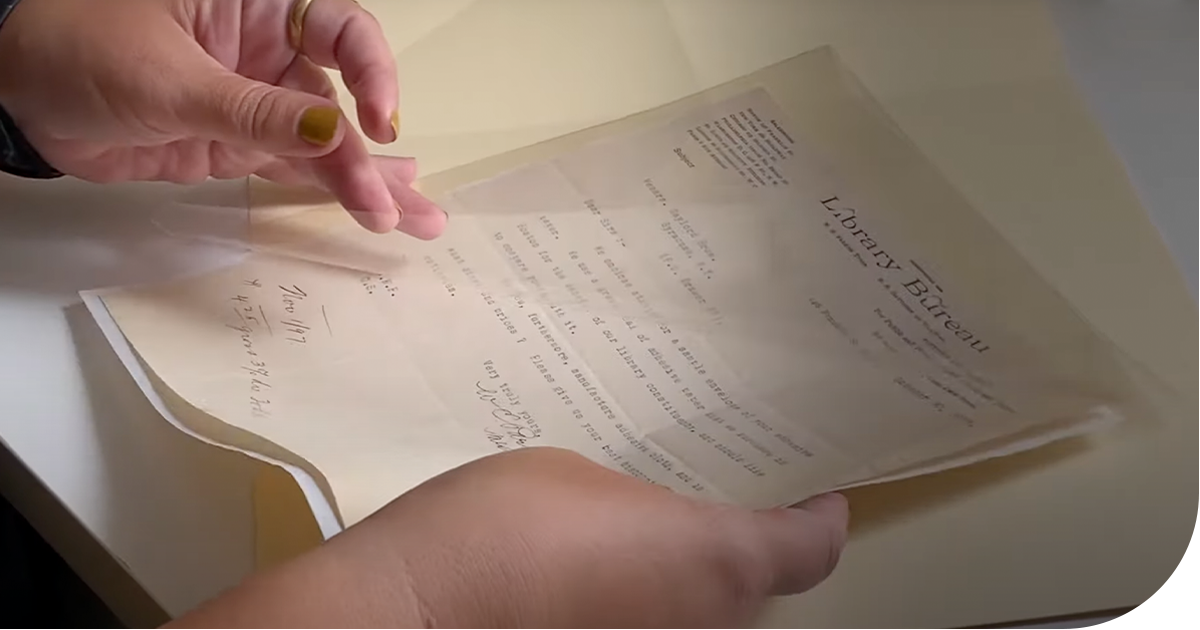Documents such as deeds, birth certificates, and marriage certificates provide important clues to the history of a region, organization, family, or individual. Protecting these documents is essential to preserving history.
Video Resource
Document Preservation Basics
Start with Clean Hands
- Wash and dry your hands to prevent the transfer of dirt, oils and other potential contaminants to a document.
- Don’t use any hand lotions or creams.
- We no longer recommend the use of white cotton gloves when handling rare books or paper due to loss of manual dexterity. Clean hands are all that are needed to safely handle books and documents. If you must wear gloves, consider using nitrile.
- Don’t try to hold other objects, such as a pencil, at the same time you are handling the documents.
- Periodically, check your hands or gloves for any transfer of dust or dirt.
Remove Extraneous Materials
- Rubber bands, paper clips, wrapping materials, or other fasteners can damage documents.
- If the material is relevant to the collection (pressed flowers for example), place them in separate enclosures.
- Separate poor-quality paper such as newsprint, from higher-quality paper to prevent acid migration.
- Gently remove loose dust and dirt from documents.
Choose Your Enclosures
- Choose primary enclosures based on the expected use and the overall needs of the collection.
- Envelopes and sleeves are best for individual documents requiring extra care.
- Archival polyester or polypropylene enclosures allow for easy viewing if the document will be referenced or handled often.
- Paper enclosures can be more budget-friendly and will absorb acid from the paper. Light and pollutant damage can be more easily avoided when using paper enclosures.
- File folders work well for storing larger quantities of documents or as a secondary enclosure for items in sleeves and envelopes.
- When documents are stored loose in file folders, interleave documents with buffered paper to prevent acid migrations between individual papers.
- Do not place too many documents in a single folder. Overcrowding can lead to unnecessary handling and potential abrasion or tearing. A good limit is 10 sheets per folder. But the more valuable the documents, the fewer sheets that should be in a single folder.
- For papers that are highly acidic, fragile, brittle or torn extra protection will be beneficial. Insert the individual document into its own envelope sling, paper folder, or polyester sleeve and store flat.
- Encapsulation can accelerate the deterioration of acid papers. By sealing the document between two sheets of polyester, the acid in the paper has nowhere to go. Using an L-sleeve provides just as much protection as encapsulation. For highly acidic papers, place a sheet of buffered paper behind the document.
- Once the items are in primary or secondary enclosures, place them in archival document cases or record storage cartons for additional protection.
- Create an inventory list for future reference.
- If storing papers vertically, use spacers and dividers in partially filled boxes to prevent sagging.

